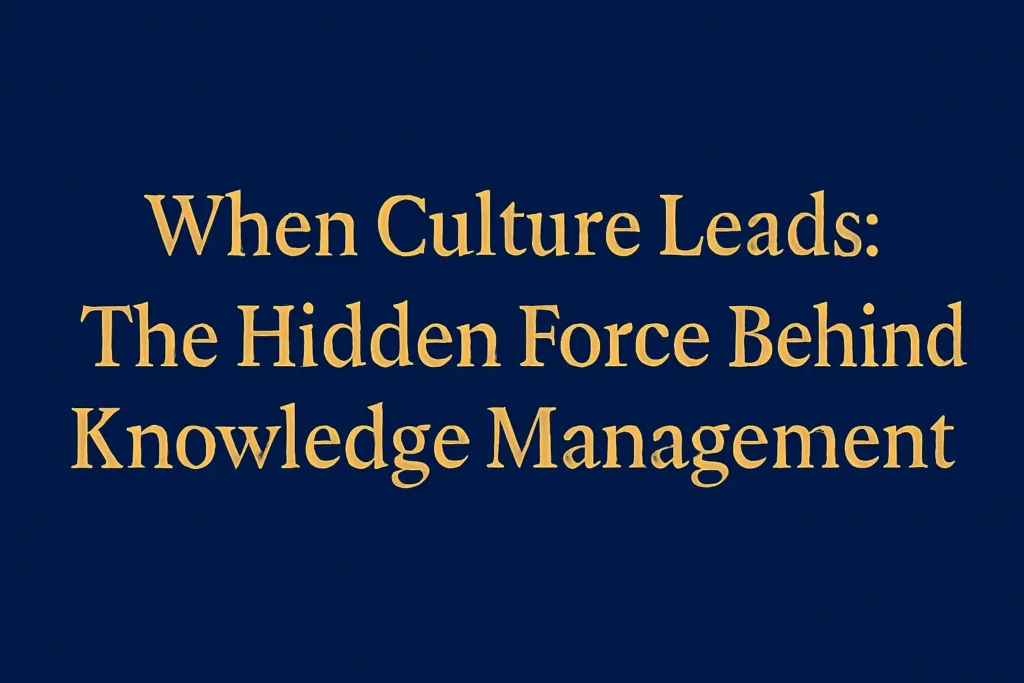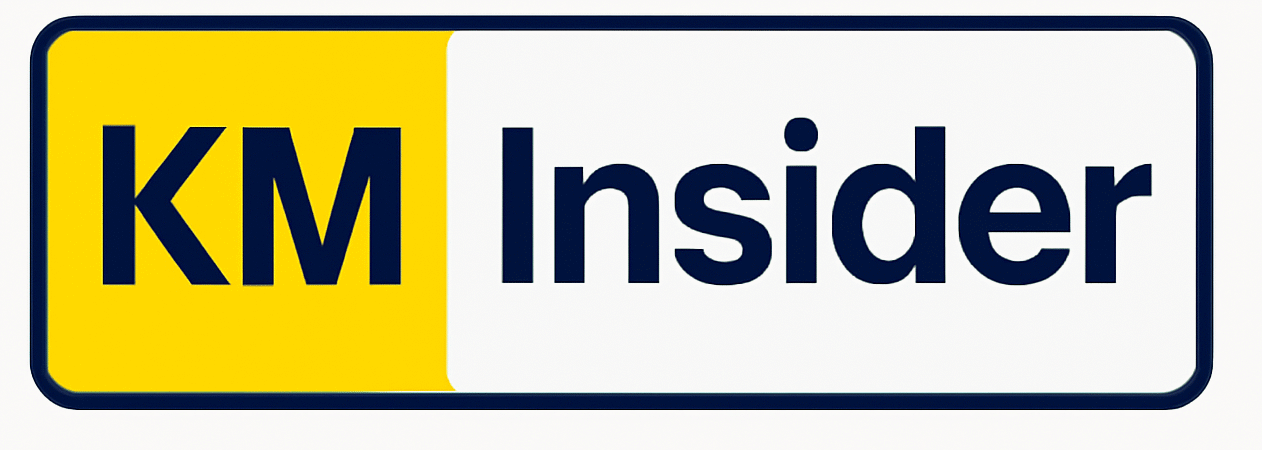Organizational culture is the invisible air that every organization breathes—unseen, yet it influences everything. It shapes how employees think, decide, and act. That’s why when we talk about knowledge management (KM), we cannot overlook the critical role of culture. Culture can either serve as a launchpad for KM or stand as a solid wall against it.
The values, beliefs, and embedded behaviors within an organization don’t change easily. Shifting culture is a sensitive, long-term, and often challenging process. This reality is one of the greatest concerns for KM leaders, because without genuine engagement and belief from employees, no tool or platform can make the engine of knowledge truly run.

Creating a Sense of Need: The Starting Point of KM
Before diving into tools, systems, or techniques, the first step is to create a sense of need among employees. Unless people understand why they should share their knowledge, no system or incentive program will work effectively.
This awareness cannot be built through colorful posters or catchy slogans. Building a knowledge-sharing culture means changing mindsets and behaviors. Employees must see and feel how knowledge sharing contributes to their personal growth, team success, and organizational progress.
Assessing Organizational Culture through the Lens of Knowledge
To evaluate cultural readiness for KM, various assessment tools—such as cultural maturity models and diagnostic surveys—are used. These help identify cultural strengths and weaknesses, revealing which values and behaviors serve as barriers or enablers to knowledge sharing.
The outcome of this assessment is a cultural map that guides the organization’s journey toward improvement. Several key indicators are directly linked to the success of a knowledge-oriented culture:
1. Incentive Systems: The Engine Behind Knowledge Behavior
No behavior is sustainable without motivation. In KM, a well-designed incentive system is essential—but there is no one-size-fits-all solution. Rewards must be tailored to the organization’s context, job types, and employee expectations. What works in a tech startup may fail completely in a government agency. Incentives should fit the organization like a custom-made suit—its size, color, and fabric all determined by the organizational culture.
2. Personal Beliefs: The Beating Heart of Knowledge Culture
Knowledge management ultimately depends on conscious human behavior. Every employee’s beliefs and values determine their willingness to share. If people do not believe that “shared knowledge is multiplied power,” they will never engage meaningfully in KM systems.
A true knowledge culture emerges when employees believe that their personal growth is tied to the organization’s growth. In such an environment, destructive competition gives way to collaboration, and knowledge shifts from being a personal asset to becoming collective capital.
3. Safe Environment: The Ground for Innovation
In organizations where employees feel safe to express ideas, feedback, and experiences, creativity flourishes. Conversely, when fear of judgment or job insecurity prevails, people remain silent—and organizational silence takes hold. Organizational silence is a symptom of fear, distrust, or apathy. Left unaddressed, it can become a fatal illness. Leaders must therefore foster transparency and psychological safety, where speaking up is viewed as an opportunity, not a threat.
4. Empowerment and Trust: From Control to Confidence
A hidden obstacle to KM is a culture of excessive control. In rigid, hierarchical structures where decision-making is centralized, learning and innovation struggle to grow. Delegating authority not only speeds up decisions but also builds ownership and responsibility. Research consistently shows that trust-based, participative leadership styles create fertile ground for a knowledge-sharing culture. When employees feel their voices matter, they willingly contribute their insights and experiences.
5. Executive Support: Leading by Example
No cultural transformation succeeds without visible and sustained support from top management. Employees look to their leaders for cues. When executives actively participate in KM discussions and practices—not just talk about them—they signal that knowledge management truly matters. If leaders remain indifferent, employees receive a clear message: “KM is just another decorative initiative.” Real commitment is demonstrated through presence, action, and persistence.
Practical Steps to Strengthen a Knowledge Culture
Organizational culture is the product of shared experiences and beliefs accumulated over years. Changing it requires strategic planning and patience. Key actions that support this transformation include:
- Regularly assessing cultural maturity with reliable tools
- Defining measurable cultural indicators related to KM behaviors (trust, learning, collaboration)
- Creating cross-departmental interaction platforms such as Knowledge Cafés or Communities of Practice
- Designing diverse incentive mechanisms for different employee levels
- Training leaders and middle managers on the cultural aspects of KM
- Recognizing and celebrating knowledge-sharing behaviors and role models
Final Thought: Culture Building, Not Campaigning
Experience across organizations shows that KM cannot be institutionalized through a few posters or internal memos. Culture building is not about promotion—it’s about fostering shared understanding, emotional connection, and genuine belief in the value of knowledge.
A thriving knowledge culture is one where every individual recognizes that their knowledge is not solely their own but part of the organization’s collective intelligence. In such a culture, sharing experiences is a privilege, not a risk.
Ultimately, when employees feel competent, trusted, and valued, their natural response is active participation in KM activities. So if we want knowledge management to take root and flourish, we must begin with the soil of culture—because just as no tree grows without fertile ground, no KM initiative succeeds without a supportive culture.
Read: Knowledge Champions Cup: Driving Engagement and Learning through Gamified Knowledge Management
Read: Turning Ugly Ducklings into Knowledge Champions

